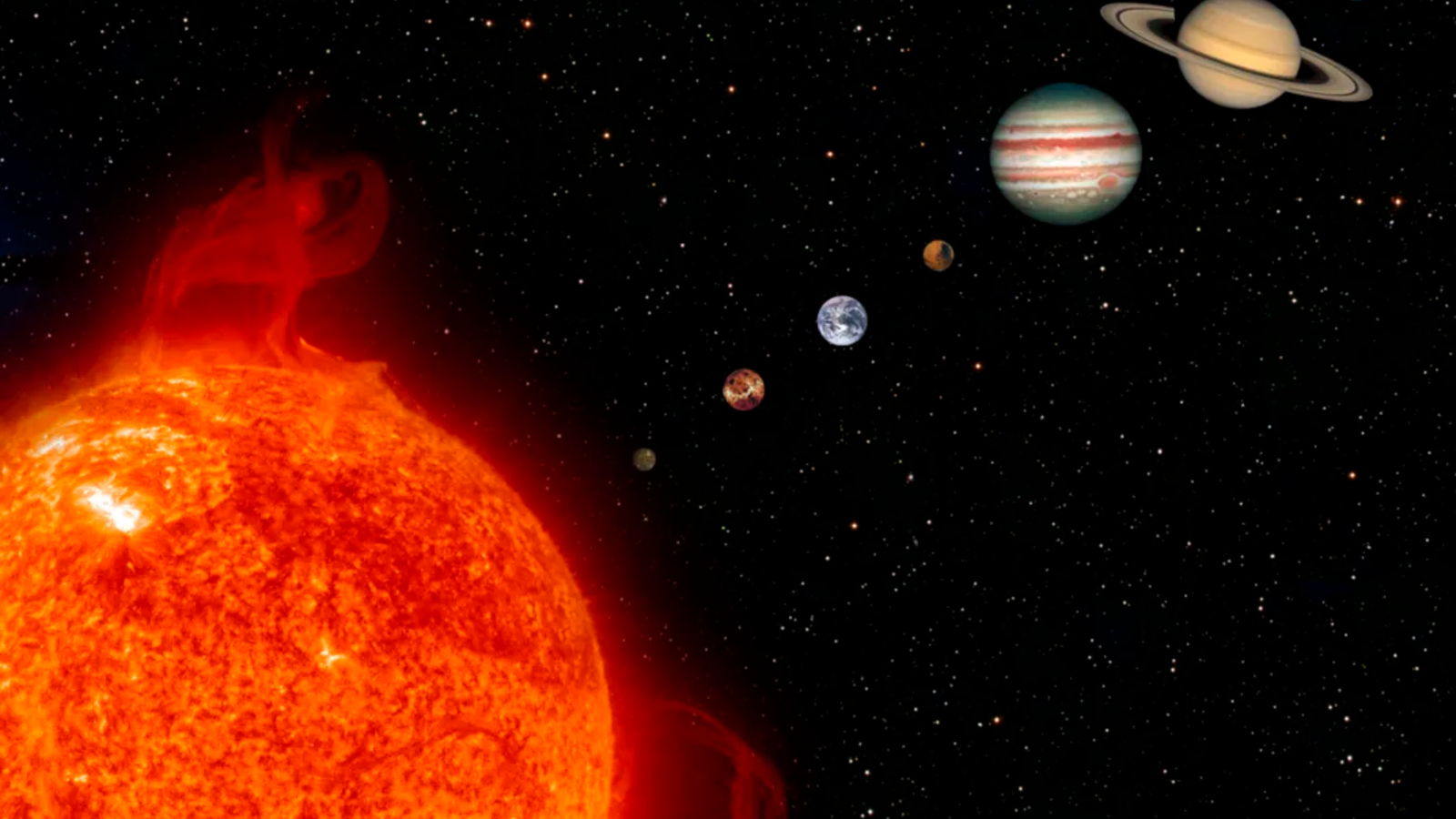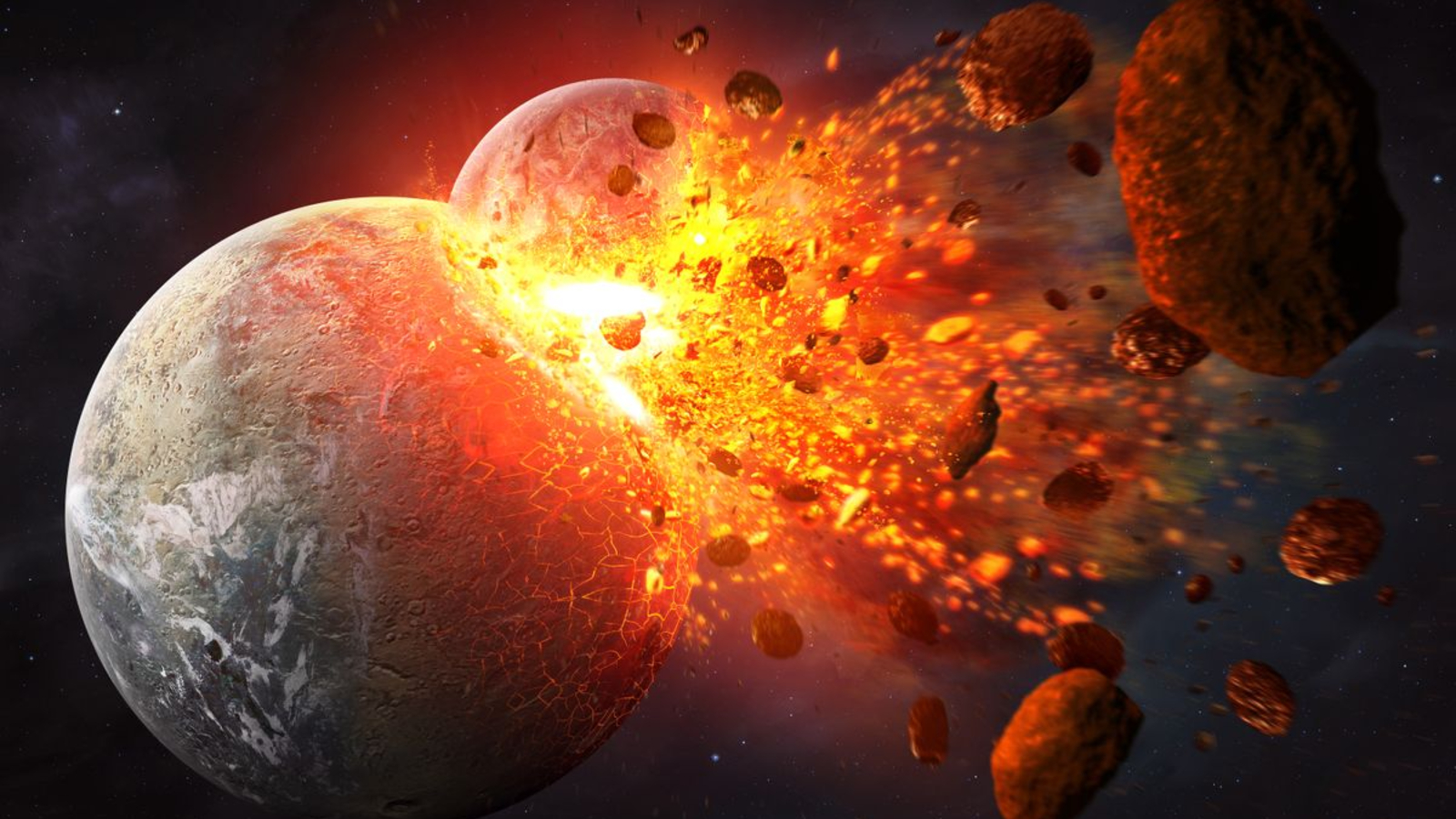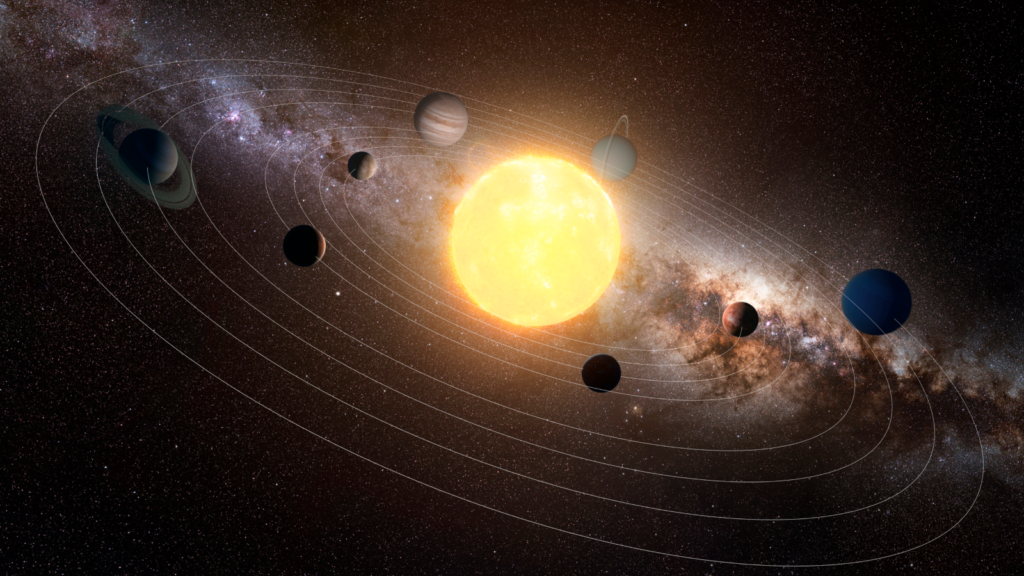Four of the solar system‘s terrestrial planets, including Earth and a long-lost world, likely started life waltzing around the sun to a fixed rhythm, according to a new study. The findings also suggest that those planets formed earlier than previously thought.
Astronomers have been increasingly interested in how planetary systems change their internal architecture on cosmic timescales, motivated by several recent exoplanet family discoveries, like the seven-planet cohort orbiting the tiny star TRAPPIST-1.
Past research has found that one early stage in a planetary family’s metamorphosis involves pairs, triplets or entire systems moving in a rhythmic beat — called resonance — around their parent star. Planets in resonance have orbital periods that form a whole-number ratio. In the TRAPPIST-1 system, for instance, the innermost planet, TRAPPIST-1 b, completes eight orbits for five of its nearest neighbor’s.
Resonance arises among planets born within a protoplanetary disk — the disk of debris surrounding an infant star — that still contains gas. Such planets plow through the gas, exchanging their rotational motion with it, which often causes them to move toward the star. Many of these planets may come close enough to each other for their orbital periods to “resonate,” or become whole-number multiples.
Today, the solar system’s planets aren’t in resonance (although Venus and Mars come close, with an orbital-period ratio of 3.05:1). But in 2005, astronomers showed that Jupiter and Saturn waltzed in a resonant beat soon after their birth. This dance halted abruptly 4.4 billion years ago, however, when the protoplanetary gas disk started evaporating, pushing Saturn, Uranus and Neptune outward in an event called the giant planetary instability.
Related: What’s the maximum number of planets that could orbit the sun?
Until now, though, nobody had examined whether the terrestrial planets have ever been in resonance, Chris Ormel, an associate professor at Tsinghua University in China and co-author of the new study, told Live Science by email. This was because “an alternative theory — that the planets formed by a series of giant impacts — was thought to be adequate” to explain how they currently behave, he said.

But research from 2013 analyzing Martian isotopes suggested that terrestrial planets could have formed when the protoplanetary disk was still rich in gas, about 10 million years after the solar system’s birth. This meant the terrestrial planets may have once been in resonance.
To examine the hypothesis, the new study’s authors created computer models of the infant solar system. Each model included two giant planets — Jupiter and Saturn — along with four rocky worlds: Mars, Theia (a hypothetical Mars-size object whose collision with early Earth formed our moon), early Earth (prior to Theia’s collision) and Venus. Mercury is widely believed to have been created by giant impacts, so the researchers excluded it from the simulations.
In all of the models, the team placed Saturn closer to Jupiter than it is today and had the rocky worlds grow by accumulating either pebbles or larger, trillion-ton rock blocks. In most simulations, Venus, Earth, Theia and Mars formed a 2:3:4:6 resonant chain within a million years of simulated time.
The researchers then performed 13,200 simulations of the planets’ potential movements over a 100-million-year interval, considering the gravitational tugs each planet exerted on the others. At the 10 million-year mark, however, the researchers made Saturn move outward “to simulate the giant planet instability,” Shuo Huang, a doctoral student at Tsinghua University and the study’s first author, told Live Science by email.
The researchers found that, based on the selected parameters, up to half of the simulations re-created the terrestrial planets’ current configuration. This included aspects like the occurrence of a single Theia-Earth collision and the 3.05:1 orbital-period ratio of Venus and Mars — a relic of their past resonance.

Additionally, the findings suggest the planets formed in the gas-filled protoplanetary disk, within the first 10 million years of the solar system’s creation, which is at least 20 million years older than current models predict.
One planet that could confirm how old the rocky inner worlds are is Venus. Because it (unlike Earth and Mars) hasn’t suffered any giant impacts, the authors think its mantle will reflect its ancient origin. And future missions could collect such mantle samples, Huang said.
The findings also indicate that outer giant planets can destabilize their inner companions tremendously. The authors said this may explain why resonant systems like TRAPPIST-1 don’t have giant outer planets.
The new study was published July 18 in The Astrophysical Journal.
